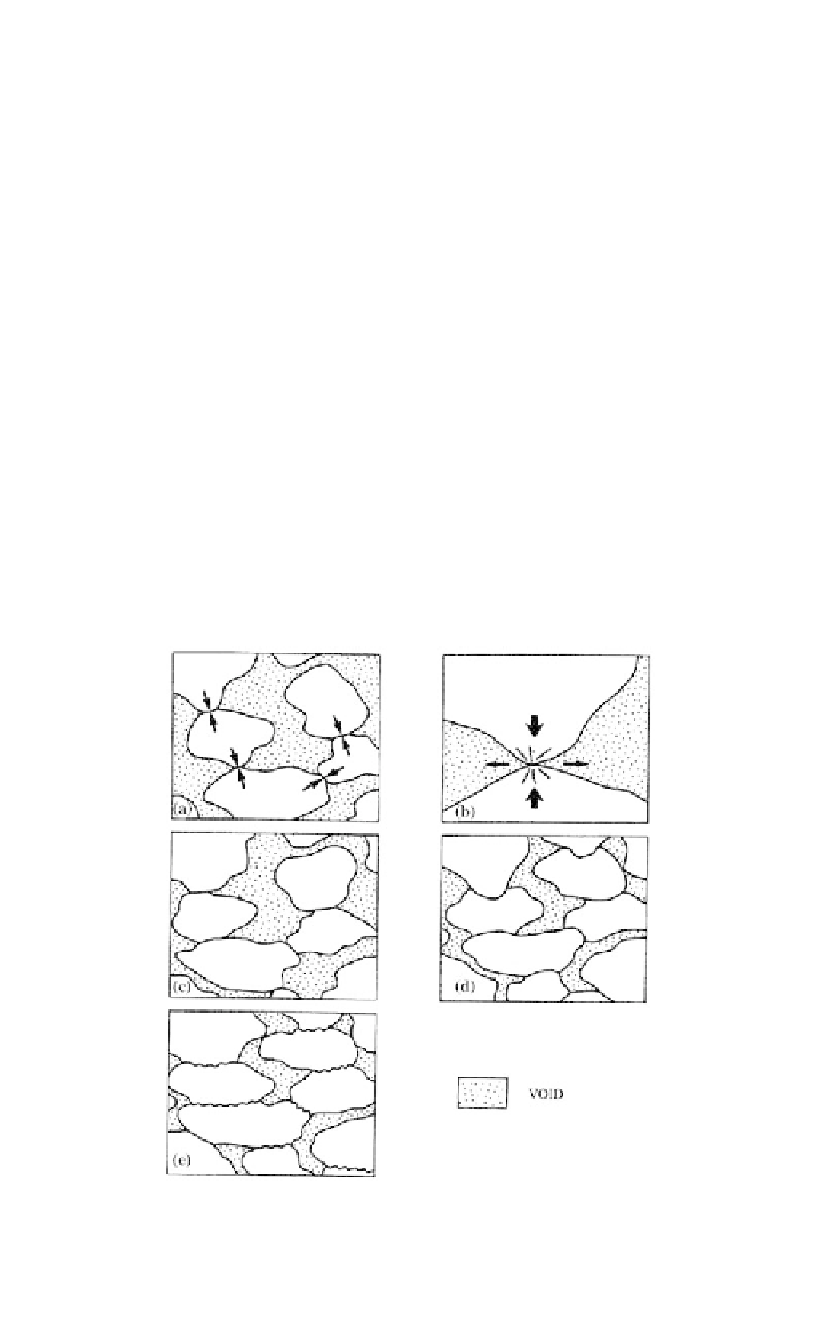Environmental Engineering Reference
In-Depth Information
3.7.7
Potential problems with filters' composed of carbonate rocks
Most filters are well graded sands or gravels with few or no fines. They are compacted to
60% to 70% density ratio. Their moisture environments (in chimney zones, in particular)
may vary widely. For example, in a filter, months or years of inundation and large or small
flow rates may be followed by months or years of unsaturated, ranging to almost dry, con-
ditions. Heavy rainfall at any time can cause water containing carbon dioxide to enter the
upper part of a chimney zone. Carbon dioxide developed by the oxidation of methane from
the groundwater or reservoir, organic acids derived from rotting vegetation or sulphuric acid
derived from oxidation of sulphide minerals may also enter a filter zone. Possible effects
of these events on a carbonate rock filter include:
(a) change of grading due to dissolution, or
(b) partial dissolution and recementation, or
(c) interlocking of grains due to pressure solution (see Figure 3.33).
Each of these effects and the likelihood of occurrence are discussed in Sections 3.7.7.1 and
3.7.7.2.
3.7.7.1
Category O carbonate rocks
Dense, old carbonate rocks in the strong to very strong range have been crushed and
processed to provide coarse and fine filter materials for many existing dams. The authors
have found no report of a dam incident or failure due to malfunction of any of these filters.
Figure 3.33.
Progressive effects of pressure solution in granular materials (Harwood, 1988). (a) Point
grain to grain contacts (arrowed), (b) Stressed grain to grain contact (large arrows) leading
to formation of dislocations in crystal lattice and subsequent dissolution, with lateral fluid
transport of solutes (small arrows), (c) Planar grain to grain contacts, (d) Interpenetrating
grain to grain contacts, (e) Sutural grain to grain contacts.

